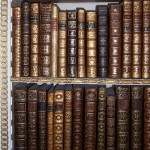 The books on my shelves had to move closer together – again. I couldn’t resist buying these non-fiction books about the Regency. Was it worth spending the money?
The books on my shelves had to move closer together – again. I couldn’t resist buying these non-fiction books about the Regency. Was it worth spending the money?
Find my reviews below.
Claire Cock-Starkey: The Georgian Art of Gambling: Being a Miscellaneous Collection of Fashionable Card Games and Diverse Pastimes
Rating: 4 of 5 points
This book will inspire you to write thrilling, authentic scenes in the card room.
Claire Cock-Starkey introduces us to typical card games of the Georgian Age, among them Faro, Hazard, Vingt-Un, Quadrille, Loo and Picquet. She explains the history of each game, its use in literature and – best of all – she provides an overview of how to play them. Two short chapters on cheating on cards and how to play false by dice will certainly inspire every writer of a Regency Novel for new scenes in the card room. Furthermore, the books deals with popular sports of the age, such as horse racing and cockfighting, and contains anecdotes about famed gamblers. Especially helpful for writers is the list of card playing terminology: Concluding what “love” means might be easy enough for everyone having watched at least one game of tennis, but interpreting – and using- words like “milking” (a method of shuffling) and “matador” (the best trumps) is much more tricky.
A small minus of the book is the disappointingly short index and the lack of a table of contents.
Adam Zamoyski: Rites Of Peace The Fall Of Napoleon And The Congress Of Vienna
Rating: 5 of 5 points
Turning a complex political event into entertainment
The bicentennial of the congress of Vienna is getting pretty close, and every Regency Enthusiast worth his or her salt should know a thing or two about this major political event. The congress is, however, a very complex topic, and many books about it give you the headache (mostly those by German researchers). Therefore, I was very happy when I stumbled upon Adam Zamoyski’s “Rites Of Peace”. The author does provide plenty of detailed information on diplomatic aspects, but he knows how to tell a story. And he doesn’t leave out the juicy aspects of the congress. There are greed, lust, blackmailing, bribery and sex: Diplomats sending their mistresses to spy on foreign delegations; politicians writing to their spouses at home how much they abhor the party-live and the women of easy virtue and then dashing off to enjoy both; and delegates not even bothering to pretend to be in Vienna for politics and diplomacy. I will never again be able to consider a political conference a demure affair.
Mr. Zamoyski selected information from secret political reports, private diaries, letters and personal reminiscences and turned them into a very readable account of an event that shaped Europe. You can easily picture life at Vienna in the years 1814 and 1815 and even get a good impression of the lavish decorations of its festivities.
Nick Foulkes: Dancing Into Battle: A Social History of the Battle of Waterloo
Rating: 4 of 5 points
A great way to prepare yourself for THE bicentennial of 2015.
A Regency Enthusiast can hardly escape books about each and every military aspect of the Battle of Waterloo. I am therefore grateful to Nick Foulkes, who looked into the social and everyday aspects of the lives of English soldiers and expatriate families in Brussels during the weeks leading up to the battle: From mobilising and transporting English troops to Belgium and an insight into the lives and pleasures of ordinary soldiers to the happy-go-lucky socialites holding balls and picnics – while Napoleon is closing in. Nick Foulkes knows how to create entertaining and authentic historical scenes. His book is based on original sources such as documents from the Goodwood Collections, letters of the Duke of Beaufort and the memoirs of James Gunn of the 42nd (Black Watch) Regiment. He allows the reader to travel with officers, soldiers and tourists, to visit their parties, and finally to join them on (the edge of) the battlefield.
A focus of the book is on the experiences of the family of the Duke of Richmond. The Duchess of Richmond’s ball on the eve of the battle is no new topic for research. Nevertheless, I enjoyed reading about its glamour while behind the glittering scene preparations for war unfolded.
